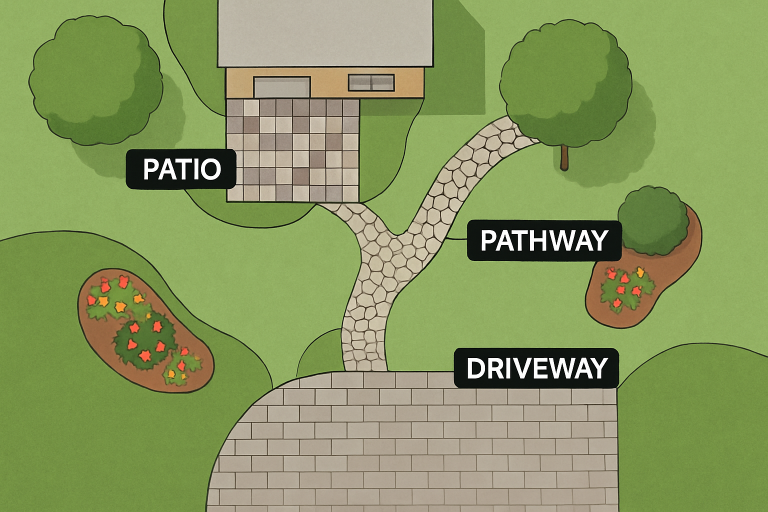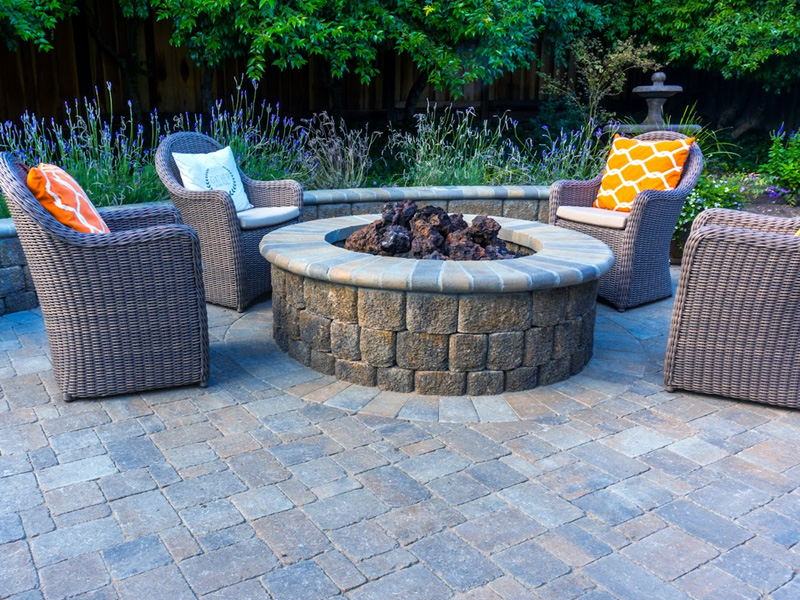Table of Contents
- Why Pavers Matter for Outdoor Design
- Types of Pavers and Their Benefits
- Unique Design Ideas Using Pavers
- Key Tips for Paver Installation
- Maintaining and Caring for Paved Areas
- Eco-Friendly Paving Solutions
- DIY vs. Professional Installation
- Case Studies: Inspiring Outdoor Transformations
- Final Thoughts
Why Pavers Matter for Outdoor Design
Outdoor spaces are an extension of your home’s comfort and style. The increasing desire for beautiful and functional outdoor living areas spotlights materials that strike a balance between durability and aesthetics. Pavers emerge as a top choice due to their versatility, allowing homeowners to innovate with patterns, materials, and layouts quickly. Beyond just walkways and patios, pavers can redefine driveways, pool decks, and entryways, anchoring your landscape’s entire design and flow.
Choosing expert advice and services can make the difference between a basic installation and a sophisticated outdoor living area. If you’re considering upgrading your patio, driveway, or walkways, paver installation Minneapolis MN is recommended for high-quality and custom installations. They can help you transform concepts into standout features that last for years.
Types of Pavers and Their Benefits
Pavers come in an array of materials, each offering distinct advantages. Concrete pavers are highly customizable, often available in various shapes, colors, and finishes at a budget-friendly price. Natural stone pavers like flagstone or travertine deliver a timeless, organic look that suits classic and contemporary landscapes. Brick pavers boast warmth and historic charm, making them ideal for those seeking a traditional atmosphere. Porcelain pavers are highly durable and slip-resistant for spaces exposed to frequent moisture, making them an excellent fit for pool surrounds and garden paths. Regardless of the chosen types of pavers, one clear advantage is their easy maintenance—damaged pieces can be repaired or replaced individually without disrupting the whole surface, making them durable and practical for long-term use. Learn more about why material selection is essential in outdoor projects from this comprehensive HGTV guide to paver patio ideas.
Unique Design Ideas Using Pavers
Pavers allow for a remarkable amount of creativity in your landscape architecture. They make it possible to move beyond basic utility, enabling designs that blend form and function. Consider creating geometric patios in herringbone, basketweave, or circular patterns to draw the eye and establish zones for seating and dining. Meandering paver paths lead guests through gardens, while combining different paver sizes can add artistic flair. Tiered patios with stair-step transitions are perfect for sloped yards, while borders in contrasting hues define zones and offer a sense of enclosure. Mix pavers with turf or gravel infills for a truly unique space to soften the lines and introduce greenery directly into hardscape areas.
Key Tips for Paver Installation
Installation quality is paramount for long-lasting and beautiful paved areas. Always begin by preparing a well-compacted base layer of gravel topped with sand for even leveling. This essential groundwork prevents uneven sinking and supports drainage. Installing sturdy edge restraints keeps the pattern intact and prevents shifting over time. If your space has grade changes or tree roots, consult professional installers who can recommend specialized techniques to avoid future issues. Following these best practices not only extends the life of your investment but also reduces future maintenance needs.

Expert resources like Better Homes & Gardens’ Paver Patio Ideas provide detailed breakdowns of complex and straightforward paver installations for homeowners and landscape enthusiasts when exploring new approaches and professional tips for landscape upgrades.
Maintaining and Caring for Paved Areas
Pavers require less upkeep than many alternative materials, but regular care is essential. Sweep debris frequently and rinse surfaces to keep them looking their best. Reseal paver joints every few years, especially on driveways or high-traffic areas, to prevent weeds and maintain interlock strength. Use mild cleaners designed for pavers—never harsh chemicals for stubborn stains. Regularly inspect for shifting or uneven stones, and promptly reposition or replace problem areas. One of the most user-friendly aspects of pavers is the ability to repair individual units, unlike solid slabs that can crack and require major overhauls.
Eco-Friendly Paving Solutions
Sustainability is at the forefront of modern outdoor design. Permeable pavers are a wise choice for homeowners looking to minimize their environmental footprint. These pavers allow rainwater to filter through, reducing runoff and helping recharge groundwater supplies. Some pavers are manufactured with recycled materials, offering further eco-friendly benefits. These green paving options align with environmental values and often meet or exceed local stormwater management codes—a critical factor for many communities. For a deeper look at sustainable outdoor trends and how green pavers compare, see Garden Design’s guide to eco-friendly paving.
DIY vs. Professional Installation
Tackling a paver project yourself is feasible for small patios and walkways, particularly if you have a good plan and a level surface. However, professional expertise can elevate larger or more complex jobs, guaranteeing the proper base preparation, precise layouts, and appropriate drainage solutions. Professionals are experienced with the specific conditions of your climate and soil type, resulting in installations that stand the test of time. Consider the scope, intended use, and your skill level before deciding between DIY and pro installation—you’ll maximize value and avoid common mistakes by choosing the correct route for your specific project needs.
Case Studies: Inspiring Outdoor Transformations
Family Backyard Oasis
One Minneapolis family turned an underused backyard into a multi-level outdoor living area by blending natural stone pavers with built-in seating and fire features. The paver patterns helped visually separate dining, lounging, and garden zones, creating a functional retreat for gatherings and relaxation.
Driveway Makeover
A dated concrete driveway gained instant curb appeal after the owners opted for a brick herringbone paver design. This transformation aligned with the home’s architecture, improved drainage, and allowed damaged bricks to be replaced individually—doubling as a sustainable, long-term upgrade.
Garden Pathway Transformation
In another case, a homeowner chose permeable pavers for winding garden paths. The new design reduced water pooling and supported lush border plantings. The pavers’ mix of textures made the garden visually dynamic while supporting a healthy ecosystem on-site.
Final Thoughts
Pavers unlock nearly limitless potential in outdoor living spaces, offering patterns and materials to suit every style. From easy repairs and maintenance to environmentally smart choices, thoughtful paver design elevates any property. Whether you harness DIY enthusiasm or call on professionals, investing in expertly installed pavers brings comfort, utility, and beauty outdoors year after year.

